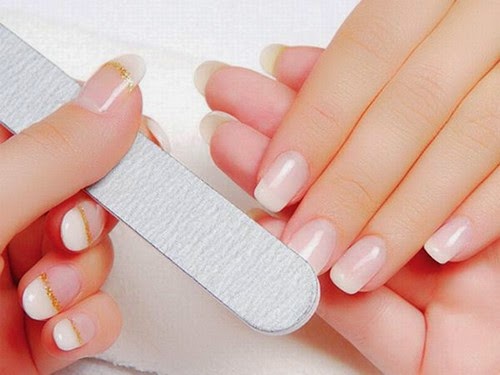1. Know Who Your Customers Are:
a. Describe the person most likely to want or need your product.
b. Why should they want to buy your product?
c. When you know the motivation, you can target the product
to the correct customer base.
d. You can't sell a product until it is defined and
positioned.
Note: A pharmaceutical company shelved a cold medicine
because they couldn't correct the drowsiness it produced. Someone renamed it
NyQuil and sold it as a bedtime cold medicine. It became the largest selling
cold medicine on the market. Just because your product is good doesn't mean it
will sell. It must be positioned correctly. That's what marketing does.
2. Promote With Postcards:
a. The U.S. Postal Service is proposing slight increases for mailing letters and postcards—but leaving first-class "Forever" stamps at their present 49 cents.
Under a filing with the Postal Regulatory Commission, letters
to international destinations would rise from $1.15 to $1.20. Postcards would
rise from 34 cents to 35 cents.
The increases being proposed if passed would become effective
on April 26,2015.
b. Postcards convey a sense of urgency to the customer. They
may not read your letter but they will turn your postcard over. (You have 3
seconds to get your message across. The average time people look at an ad.)
c. Postcards will keep your mailing list clean (Address
Correction Requested), First class returned and corrected free of charge by the
Post Office. (Bulk Mail letter corrections will have additional charges. Check
with the Post Office).
d. With a postcard, your message is out in the open. Other
potential customers will see it too, not just the person it's addressed to.
3. Create A Survey:
a. Mail a survey to customers to find what motivates them to buy.
b. Where do they work? What magazines do they read? Age
Group?
c. This information will tell you where and how to reach your
targets.
d. Offer a gift or discount for completing the survey.
4. Use A Two-Step Approach:
a. Offer complimentary business related information to potential customers.
Step 1: Offer a free "fact sheet" to customers that
shows your expertise.
Step 2: Add these customers to your mailing list and mail to them often.
Step 2: Add these customers to your mailing list and mail to them often.
5. Say "Happy Birthday":
a. Mail greeting cards to your customers (dates from your survey #3).
b. Include a coupon or special offer or tell them about your
product that they should give themselves as a gift.
6. Team Up With Another Business:
a. Share advertising costs with another company.
b. Sharing costs makes high-quality printing and larger ads
affordable.
c. Can your product be teamed with another product? (Motor
Oil packaged with your new funnel invention.)
7. Be Consistent And Committed:
a. Research shows a message must be repeated to be remembered.
b. Send multiple mailers to the same people.
c. If you advertise, do it where you can afford to do it
often.
8. Use The Telephone:
a. Test a new idea by phone before you commit to costly promotions.
b. Response from 100 phone calls will be similar to 1,000
pieces of mail.
c. You'll receive faster results, it costs less, and you'll
generate greater input and feedback.
9. Raise Your Prices:
a. Has your competition raised their prices? Maybe you should too.
b. Higher prices separate you from the crowd, and implies
your product is better, an deserves a premium price. BMW does not compete with
Yugos.
c. Be careful in this area. The customer must see the value
of the higher price.
10. Promote Trends or Current Events:
a. Can you tie your product or service to the environment, Olympics, World Series?
b. Gain valuable credibility and interest by association with
known groups.
11. Add Personality To Your Business:
a. Use photos of you and/or your staff in your promotional materials.
b. A quote from the person pictured conveys friendliness and
builds confidence in your company.
c. Responses to seminars and programs are dramatically higher
when photos are used.
12. Use Deadlines:
a. Make sure you put a time limit on promotional materials.
b. Watch your expiration dates. (What day does your offer
end?
Are you losing an extra weekend of business?)
For More See: Understanding Why Customers Buy
13. Fear Of Not Having Your Product:
a. For products that increase personal security, personal safety or health, fear can be an effective business-boosting tool.
b. If they don't buy your product now, they will miss
something. A discount, premium free gift, etc. Fear of loss is more powerful
than expectation of gain.
14. Use The Media:
a. Send letters covering topics related to your business to local publications.
b. Connect your product or business to some current event
that is making news.
c. Your name and business name will probably be used if your
letter is printed.
d. You will be perceived as an expert in your field.
e. You are holding this information because of an Internet
site or a local or national promotion.
15. Make Advertising Last:
a. Buy ads that last months, not minutes.
b. Magnetic signs for car or van. Don't forget the back of
your vehicle. Put signs on truck tailgates and rear windows. Most customers
don't drive alongside your vehicle and copy down the phone or address. They are
more apt to do it at a stop sign.
c. Use clever bumper stickers or T-shirts.
d. If you're printing an expensive color piece, ask the
printer to quote the price of his house paper.
e. Design the outside of the brochure to be permanent and the
inside for future changes. That way you can print up large quantities (5,000 or
more) of the outside only and have the printer keep them on hand. Then as your
message changes you only have to print the inside.
f. You will save by doing a large run in the beginning. You
will also save by only printing what you need as your company changes. Avoid
outdated brochures.
16. Examine Promotional Materials:
a. Make sure business cards, letterheads, brochures and packaging materials are first class. This is not the area to spare expenses.
b. What types of materials is your competition using?
c. If you can't afford 4 color brochures use 2 or 3 color.
Use of color increases response by 26%.
d. If you can't afford 2 color... use screens. (See Below)
Note: Screen is another word for shade (darker) or tint
(lighter). For example: A florist wants red flowers around the borders of his
brochure and black ink for the text. That's two colors. Pink is a 50% tint of
red, it is not another color. You can have some pink flowers and some red
flowers with little or no additional cost depending on how your printer handles
screens. This process will give the appearance of three colors; red, pink, and
black. Use gray (a tint of black) and presto, a 4 color brochure (red, pink,
gray and black) for a 2 Color price. It looks expensive but isn't.
















